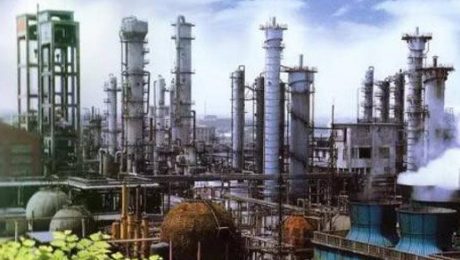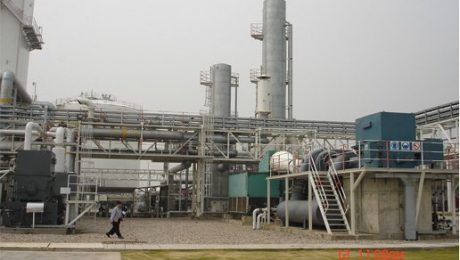Air separation manufacturing in workshop of Suzhou Xinglu
Tuesday, 17 October 2017
Suzhou Xinglu Air Separation Plant Science and Technology Development Co.,Ltd. focuses on the research&development, design and manufacture of cryogenic technical field. The video will show you the air separation manufacturing in workshop.
Various usages of Hydrogen
Saturday, 16 September 2017
1.Petrochemical industry production: as the raw material gas of hydrogenation of ammonia, methanol, petroleum refining, etc. As well as organic materials of organic hydrogenation. 2.Metallurgical industry: it is widely used in the production and processing of tungsten, molybdenum and titanium just as reduction gas and protection. And it used in production and rolling of thin steel plate, strip steel strip and silicon steel sheet;Production of precision alloy, powder metallurgy material. 3.Electronics industry: mainly used in the production of electronic materials, semiconductor integrated circuits and electro-vacuum main devices. 4.Building materials and light industrial production: as protective gas and combustion gas, such as quartz glass and artificial gemstone production, hydrogen monoxide is used to obtain high temperature;In float glass production,hydrogen is used
Various usages of acetylene gas
Tuesday, 12 September 2017
Pharmaceutical industry: used to make contraceptive drugs. Atomic absorption analyzer: used as carrier gas. The important use of dissolved acetylene is metal welding and cutting, spraying, surface quenching and heat processing. The earliest application of acetylene gas is used for lighting, and mainly used for beacon light.
Various usages of Helium in all kinds of industries
Tuesday, 05 September 2017
Helium widely used military-industrial complex, scientific research, petrochemical, refrigeration, medical, semiconductor, pipeline leak detection, superconducting experiment, metal manufacturing, deep-sea diving, high precision welding, optoelectronic products, etc. 1.Low temperature cold source: using liquid helium low boiling point : 268.9 ℃ , can be used for liquid helium cryogenic cooling. However,cryogenic cooling technology in the field is wildly used ,superconducting technology has a wide application of superconducting materials in low temperature (100 k) shows the superconducting characteristics, in most cases, only liquid helium is easier to achieve such low temperature.Superconducting applies in magnetic train in the transportation industry, and nuclear magnetic resonance (NMR) imaging in the field of medical equipment as well. 2.Balloon inflation: because the helium gas density is far less
Ammonia gas—industry raw material
Friday, 01 September 2017
1.Synthetic ammonia nitrogen provides plentiful raw materials for nitrogenous fertilizer manufacturing. 2.Ammonia is also used in production of various amino, acyl compounds and dynamite manufacturing also takes up a lot of ammonia. 3.Ammonia suitable for temperature refrigerating working medium of large and medium sized refrigerator and it is also industrial raw materials of metallurgical, pharmaceutical and etc.
Nitrogen—Industry salt
Monday, 21 August 2017
1.Nitrogen-filled packaging, nitrogen filling bulbs.Chemical properties (using chemical properties is stable, normal temperature is very difficult to react with other material “) food, canned, fruit and etc.usually use nitrogen for corrosion protection.The nitrogen filling in a light bulb, can prevent the tungsten oxide and slow down the utilization rate of tungsten filament, prolong the bulb’s service life . 2.Chemical synthesis is important raw materials of synthetic fiber (nylon, acrylic), synthetic resin, synthetic rubber and other , also can produce fertilizer. 3.Production car tyres, nitrogen filling tyre can improve the stability and comfort during driving, preventing blowout and grinding line due to deficency , prolong the service life of tires, reduce fuel consumption, protect the environment. 4.Used as shielding gas, normally, Nitrogen’s chemical nature doesn’t very lively, so it is
Application of gas hydrogen in petroleum industry
Tuesday, 15 August 2017
It need to add hydrogenation and by de-sulfur and hydrogenation cracking to extract crude oil, petroleum refining process need to add hydrodesulfurizer. The amount of hydrogen used in the petroleum industry is second only to synthetic ammonia. Hydrogen is mainly used for naphtha hydrodesulfurization, gas oil hydrodesulfurization, fuel oil hydrodesulfurization, improved flame height and hydrocracking of aircraft fuels, etc field. Hydrogen is mainly used for C3 fractions hydrogenation, gasoline hydrogenation C6-C8 fraction hydrodealkylation and the production of cyclohexane and so on. Welcome to Suzhou Xinglu Air Separation Plant Science and Technology Development , Ltd. which focus on gas air separation plant,liquid air separation plant and so on.
Application of gas hydrogen in petrochemical industry
Friday, 11 August 2017
1) A 1000t/d scale ammonia plant is used as a raw material gas for ammonia, methanol and petroleum refining. It need 336 cubic meters for per ton of ammonia, and if the ammonia is produced on a large scale. The main cost is comes from the hydrogen. A 2500t/d scale methanol plant, each production of 1 ton of methanol needs hydrogen 560 cubic meters; Hydrogen is also the organic hydrogenation reaction feed gas. 2) Synthesis of organic compounds Hydrogen and carbon monoxide synthesis compounds to a variety of organic compounds , such as ethylene glycol synthesis, synthesis of polymethanes, alcohol homologous reaction,etc.
Application of gas oxygen in petroleum industry
Thursday, 20 July 2017
Oxygen is used as pulverized coal or heavy oil gasifier, heavy oil high temperature cracking is also inseparable from oxygen. The consumption index (equivalent to about 10t/h of ammonia production) of medium-sized ammonia plant switch from heavy oil as raw material to coal as raw material, in which oxygen consumption is: Coal water slurry pressurized gasification (conventional furnace) is 9264m3/h; water coal pressurized gasification (two-zone double-furnace) is 7333m3/ h; dry powder pressurized gasification is 7179m3/h; Smoke-free lump coal atmospheric pressure enriched oxygen continuous gasification, China Shenhua coal liquefaction demonstration project will be the world’s first coal direct liquefaction technology to achieve large-scale synthetic oil. To use heavy oil for gasification, per ton of synthetic ammonia consumption is 250~700m3; to use slag oil
Application of gas oxygen in coal gasification and liquefaction industry
Monday, 10 July 2017
Coal gasification industry is a large user of oxygen. Oxygen is used as gasification agent of pulverized coal in the process of coal gasification, such as the powder gasification, per ton of synthesis ammonia consumes 500~900m3 of oxygen; Oxygen is used as an oxidant to convert solid coal into a combustible gas mixture. In the process of coal liquefaction, oxygen is used as a vehicle for the conversion of coal from hydrogen-depleted solid hydrocarbons to hydrogen-rich liquid hydrocarbons. The consumption of oxygen required to produce 1 ton of coal is at least 0.3 tons of oxygen per ton of coal, and may also reach 1 ton per ton of coal. So the production of 10 million barrels per day of








